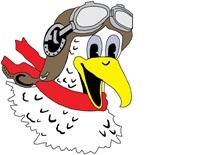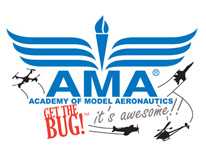Pilot: Scott K.
Plane: Ironing Monokote hinge onto rudder. Scott prefers Monokote as he feels it is more durable. Monokote hinges almost completely seal air leakage which increases efficiency of control surfaces.

Pilot: Scott K.
Plane: Soctt aligning Monokote hinges to attach rudder to vertical stabalizer.

Pilot: Scott K.
Plane: It's necessary to hold rudder tightly to the vertical stabalizer to get a good seal for the control surface.

Pilot: Scott K.
Plane: Each hinge is made from two pieces of Monokote. The two adhesive sides are overlapped to make one hinge. Here one hinge half is black and the other half is white.

Pilot: Scott K.
Plane: After tacking in place, each hinge is ironed down.

Pilot: Tom Richards
Plane: Tom's source for his current scratch build of a McDonnell F-101 VooDoo

Pilot: Tom Richards
Plane: "Hobby Foam" (replacement for Depron) parts begin to take shape on enlarged drawing.

Pilot: Tom Richards
Plane: Greg Wines holds foam pattern used to bend heated foam sheet used to make lower part of fuselage.

Pilot: Tom Richards
Plane: Carbon fiber rods and rubber bands hold foam over mold while Hobby Foam is heated and cooled.

Pilot: Tom Richards
Plane: Foam sheet for top of wing that fits between fuselage halves.

Pilot: Tom Richards
Plane: Checking postion of wing on fuselage.

Pilot: Tom Richards
Plane: Fiberglass rods on bottom of fuselage top half add strength and hold shape of fuselage.

Pilot: Tom Richards
Plane: Top half of fuselage and wing on scale plan.

Pilot: Randyl Britton
Plane: Engine cowl and wood plug used to make cowl from 2-liter soft drink bottle.

Pilot: Randyl Britton
Plane: Drawing for model needing an engine cowl.

Pilot: Randyl Britton
Plane: Another engine cowl wood plug and molded part.

Pilot: Steve Black
Plane: Unfinished scale drawing of Dennis Sivak's Sky Bug. Adding dimensions and more detail for use of electric motor. Dennis' Sky Bug is glow fuel powered.


